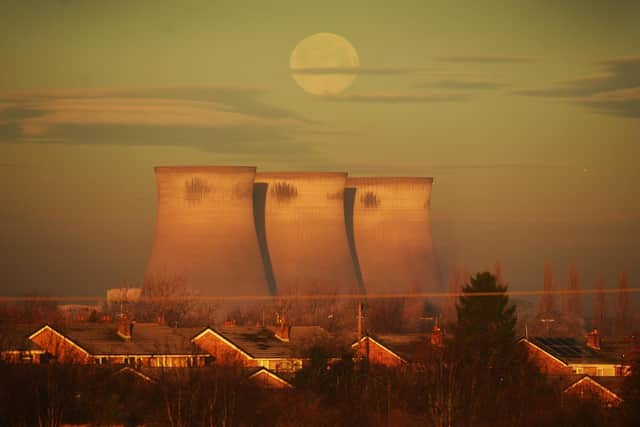How January full moon got the name Wolf Moon
The event was captured in the backdrop of landscapes as diverse as the twin peaks of Les Jumelles mountain in Switzerland to the Balmoral Hotel clock in Edinburgh.
More locally, The Yorkshire Post photographer Simon Hulme took this stunning shot of the moon as it set behind the prominent towers of Ferrybridge Power Station and a new day dawned.
Advertisement
Hide AdAdvertisement
Hide AdJanuary’s full moon is known as the Wolf Moon, so called after the howling of hungry wolves as they bemoan the sparsity of food supplies in the heart of winter.


Royal Museums Greenwich (RMG), which comprises the Royal Observatory, explains how over time different cultures have given names to each of the full moons throughout the lunar calendar.
“Many of the Moon’s nicknames have come to us from Native American culture because for their way of life, the cycles of the lunar phases were just as important a method of timekeeping as the longer solar cycle of the year (from which the modern Gregorian calendar is derived),” it states.
Taking the most popular names for each full moon, skywatchers can look out for a snow moon, worm moon, pink moon, flower moon and strawberry moon in the first half of the year.
Advertisement
Hide AdAdvertisement
Hide AdThe buck moon, sturgeon moon, full corn moon, hunter’s moon, beaver moon and cold moon will then follow.
Some years, though not this one, there’s also a blue moon - and it’s not as rare as the famous saying might suggest, occurring roughly every two to three years.
Typically, there’s 12 full moons each year, one every month. But as there’s around 29.5 days between each full moon, in some years, a 13th can also be seen.
“This additional full moon does not fit with the normal naming scheme,” the RMG says, “and so is instead referred to as a ‘blue moon’.”
Advertisement
Hide AdAdvertisement
Hide AdLike it’s 12 counterparts though, it can still make an impressive photo.
Support The Yorkshire Post and become a subscriber today. Your subscription will help us to continue to bring quality news to the people of Yorkshire. In return, you'll see fewer ads on site, get free access to our app and receive exclusive members-only offers. Click here to subscribe.
